#Antique weapons
Text

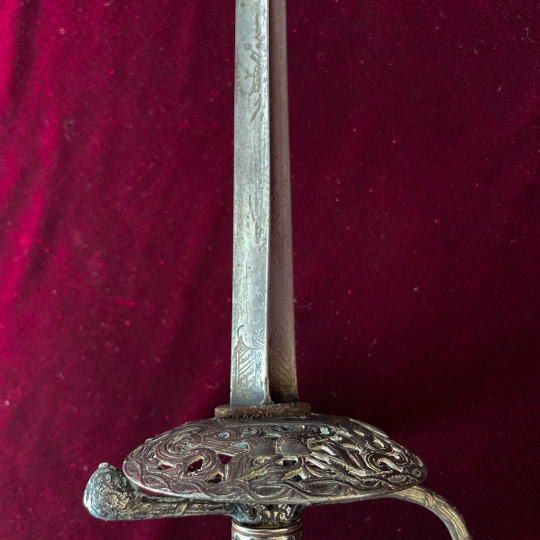
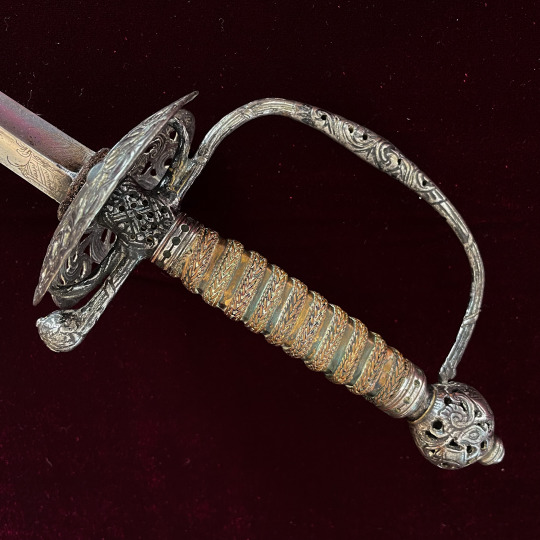
Late 18th Century European smallsword with a chased and pierced steel hilt. The guard is a symmetrical in the 'Pas d'ane' style and decorated with military trophies indicating that this might have belonged to a military officer. The grip is square and bound with alternating copper ribbon and twisted wire. Originally this would most likely been silver plated.
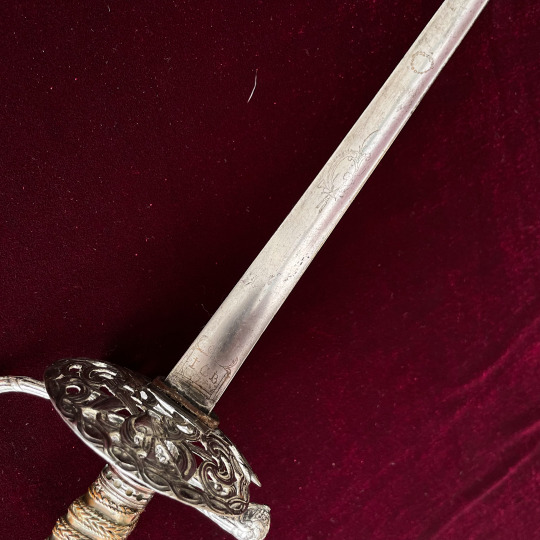
The hollow ground trefoil blade is by Johann and Clemens Boegel of Solingen and maked with their I.C.B trademark and other motifs typical of the time.
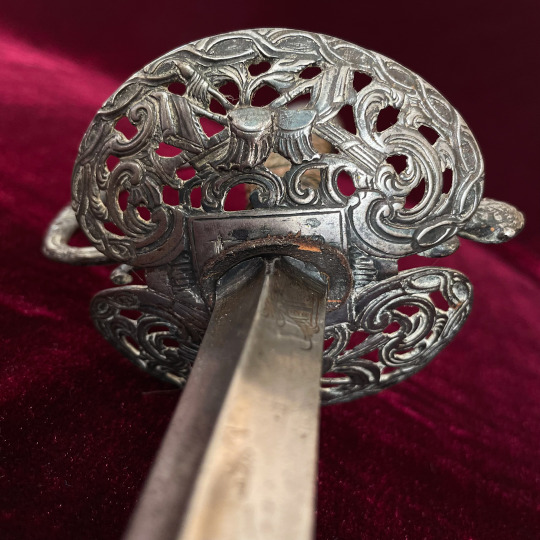
The term 'Pas d'ane' comes from French and translates as 'donkey's foot' after the shape of the donkey sole. Commentators on smallswords often misidentify the small loops between the guard and the knucklebow and quillon as the 'pas d'ane' when the correct term for them is annulets.
On Western European smallswords the annulets are a decorative hang over from earlier fencing styles when they were larger to allow the fencers' finger over the crossguard.
232 notes
·
View notes
Text
youtube
Oh wow, what an incredible artefact.
#polearms#arms and armour#16th Century#Antiques#Spetum#Antique Weapons#Weapons as status symbols#Youtube
75 notes
·
View notes
Text



For my history nerd friends, especially @beakedwhalesyo: this is a Japanese Arisaka .30 caliber rifle with bayonet. My great uncle brought it home from the war and it's been in my town's collection of historic artifacts since.
5 notes
·
View notes
Text

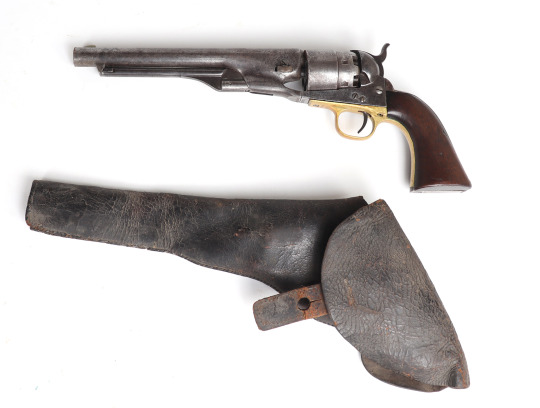
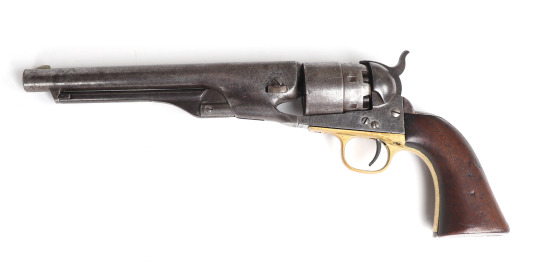

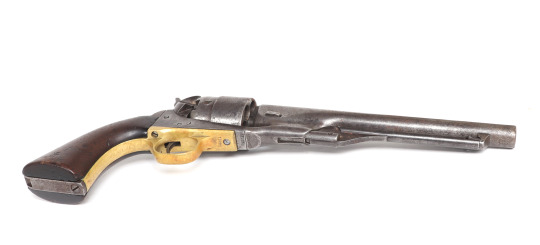






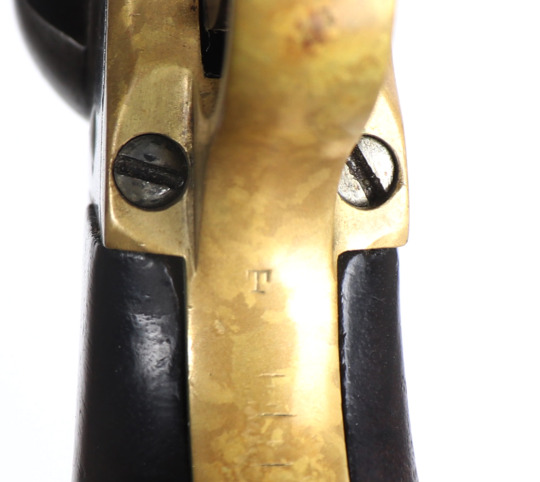















Antique weapons is our specialty, along with European arms and armour, these are a few offerings coming up for auction.
#antiques#auctions#armor#arms#swords#polearm#poleaxe#halberd#antique weapons#daggers#art#history#firearms
2 notes
·
View notes
Text
How does one acquire the necessary licenses and permits to own antique firearms and weapons?
Acquiring the necessary licenses and permits to own antique firearms and weapons is an essential step to ensure compliance with legal regulations and enjoy the privileges of ownership. Whether you are a collector, enthusiast, or individual interested in owning these historical artifacts, this guide will provide you with valuable insights and steps to navigate the process of obtaining the required…

View On WordPress
#antique firearms#antique weapons#application process#background checks#category#Federal Firearms License#FFL#legal framework#legal requirements#licenses#licensing requirements#permits#research#responsible ownership#safety and training courses#storage regulations#transportation regulations#waiting periods
0 notes
Text

Consecrated sword presented by Pope Innocent XI to John III Sobieski - 'Lion of Lechistan' (1675)
9K notes
·
View notes
Text

Fléau! (Scourge!) by Henri-Camille Danger
#henri camille danger#art#fléau#scourge#allegory#war#city#giant#giants#antiquity#ancient#ancient world#europe#european#history#mythological#mythology#club#clubs#weapon#weapons#architecture#barbarians#barbarian
261 notes
·
View notes
Text
Victorian knuckleduster pocketknife pistol, 1870's.

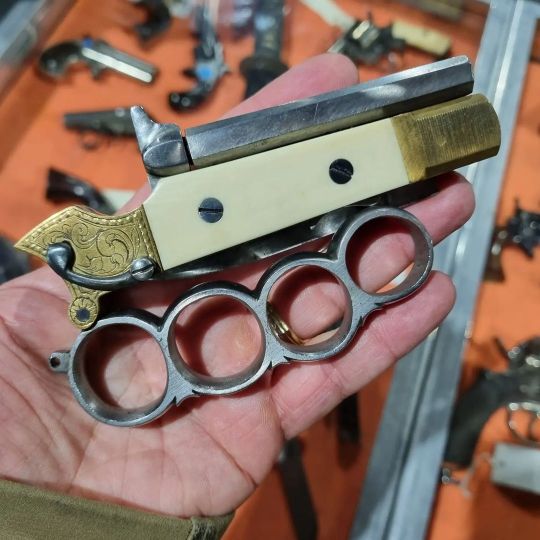
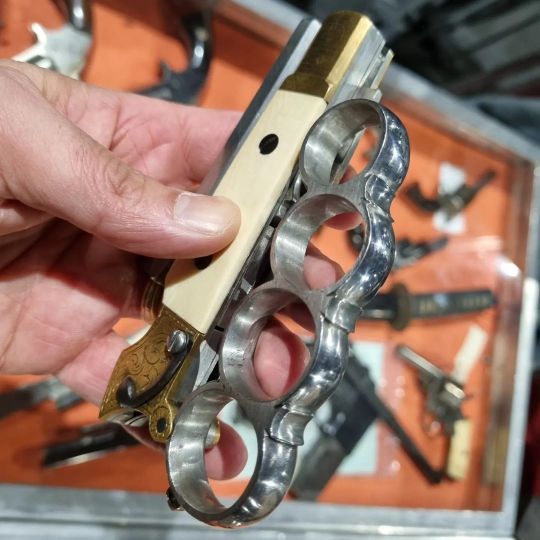
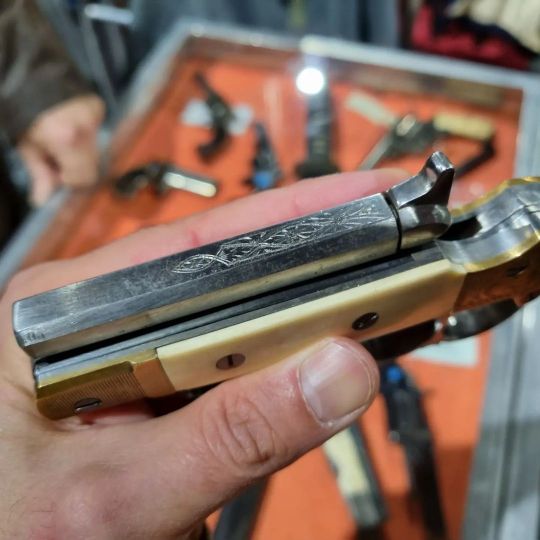
55 notes
·
View notes
Text
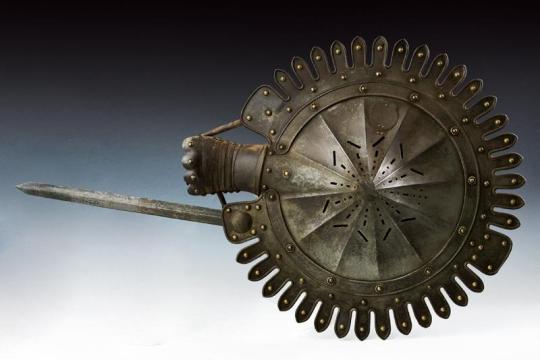

German bracciajula (lantern shield with guantlet and retractable blade), 17th century.
from Czerny's International Auction House
172 notes
·
View notes
Photo
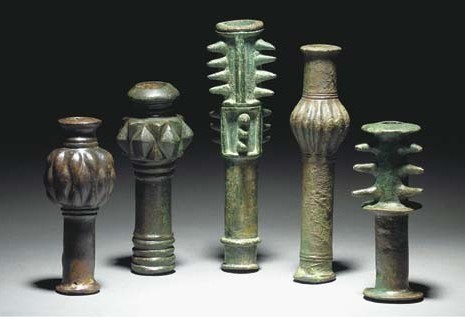
Mace Heads - bronze - Luristan (now Western Iran) - Late Bronze or Early Iron Age - c.2nd - Early 1st Millennium BCE
77 notes
·
View notes
Text
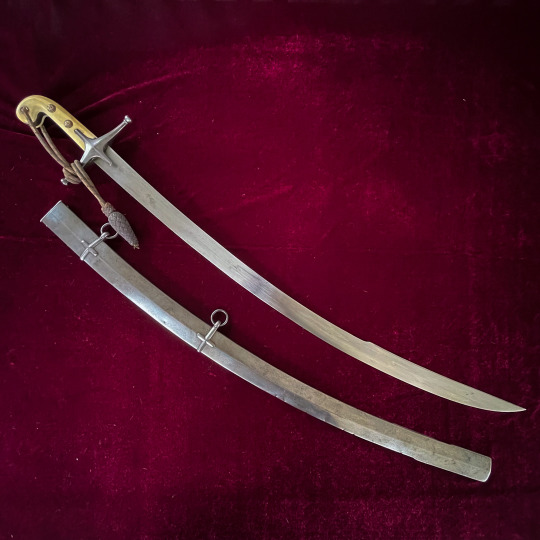

Late Georgian era British Lancers or Dragoon officers dress Mameluke sabre.
While they are called 'Mameluke' sabres by collectors, they are in truth a Europeanised interpretation of the shamshir or kilij sabres that the actual Mameluke warriors used. The 'Mameluke' sabre had become fashionable with many British (and French) officers following Napoleon's Egyptian campaign and were carried by many notable officers on both sides of the conflict, including the Duke of Wellington.
However, it was only in 1822 that the British army first officially recognised the 'Mameluke' as a regulation pattern for the newly formed lancer regiments.
In 1831 with the Pattern sword for General Officers, which remains the current dress sword for Generals in the British and many Commonwealth Armies to this day.
Mameluke sabres can also be found with links to other light cavalry and some heavy cavalry regiments, plus they were carried as bandsman's swords.


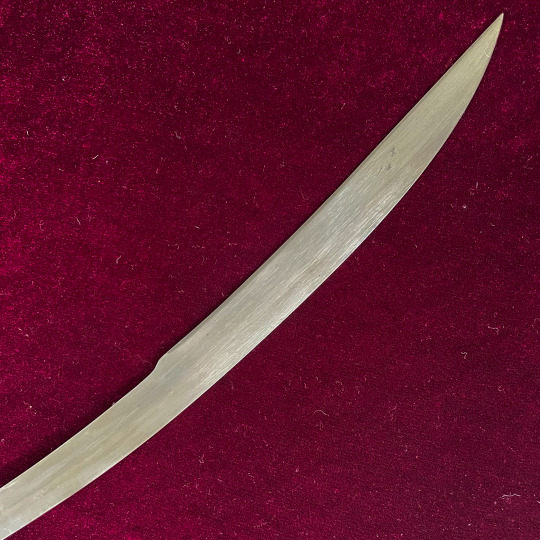
#sword#Sabre#Mameluke#Light Cavalry#Napoleonic Wars#Antiques#Antique Weapons#Military history#British Army#Lancers#Georgian Era#19th Century
103 notes
·
View notes
Photo



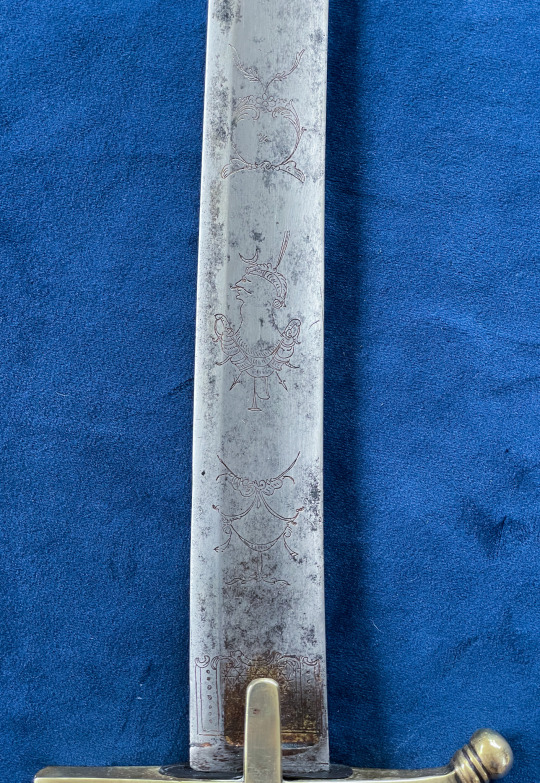
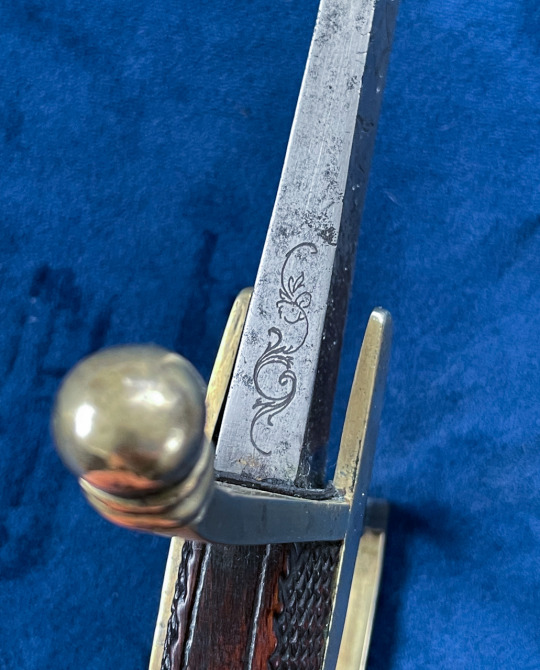
First sword delivery of 2023 has finally arrived. Not my first purchase this year but the first to reach me.
The top sword is a large and heavy French First Empire era cuirassier officers sabre with the ‘Garde de Bataille’ hilt. The blade is is marked with the Solingen Rose on the spine and retains a small amount of etching. Unfortunately it’s missing its’ scabbard and I will try and get a reproduction one made for it.
The second is a French light cavalry officers sabre with the ‘Cote de Melon’ style hilt. This one is likely from the First Republic era. It has a very stout blade that is proportional to one on a troopers’ sabre. Again the blade was made in Solingen and features the typical talismanic engraving typical of the late 18th Century.

A comparison of the French light and heavy cavalry swords to their British contemporaries of the era.
#Swords#Sabres#Antiques#International Arms dealing#Heavy Cavalry#Light Cavalry#cuirassiers#French Army#First Empire#First Republic#Antique weapons#Napoleonic era#Napoleonic wars#Georgian Era#garde de bataille#Cote de melon#1796 Pattern
127 notes
·
View notes
Text
and what weapon would they be???
#personally i fancy weapon draco#he’d be a rapier at heart but a long sword in harry’s hands because it matches him#also ron would be the weapon to hermione im not sure what weapon yet but possibly something blundt#and luna would be a weapon she’d be an antique hunting rifle and she’s be all white with lil pretty details#and yes im thinking of meister ginny wieling her#dean and seamus could go either way but im leaning towards weapon seamus as for neville hes a meister without a weapon cuz i cant think rn#harry potter#drarry#draco malfoy#soul eater#meister#meister and weapon
12 notes
·
View notes
Text
1 note
·
View note
Text
How does one identify the markings and engravings on antique firearms and weapons?
Identifying the markings and engravings on antique firearms and weapons is a fascinating journey that unveils the history, craftsmanship, and individuality of these remarkable artifacts. Whether you are a collector, historian, or simply intrigued by the world of antique firearms and weapons, this comprehensive guide will provide you with valuable insights and techniques to help you decode and…

View On WordPress
#aesthetic beauty#antique firearms#antique weapons#barrel#decorative engravings#documentation#engravings#expert opinion#frame#identification#Interpretation#lock#markings#preservation#proof marks#reference materials#research#serial numbers#storytelling#trigger guard
0 notes
